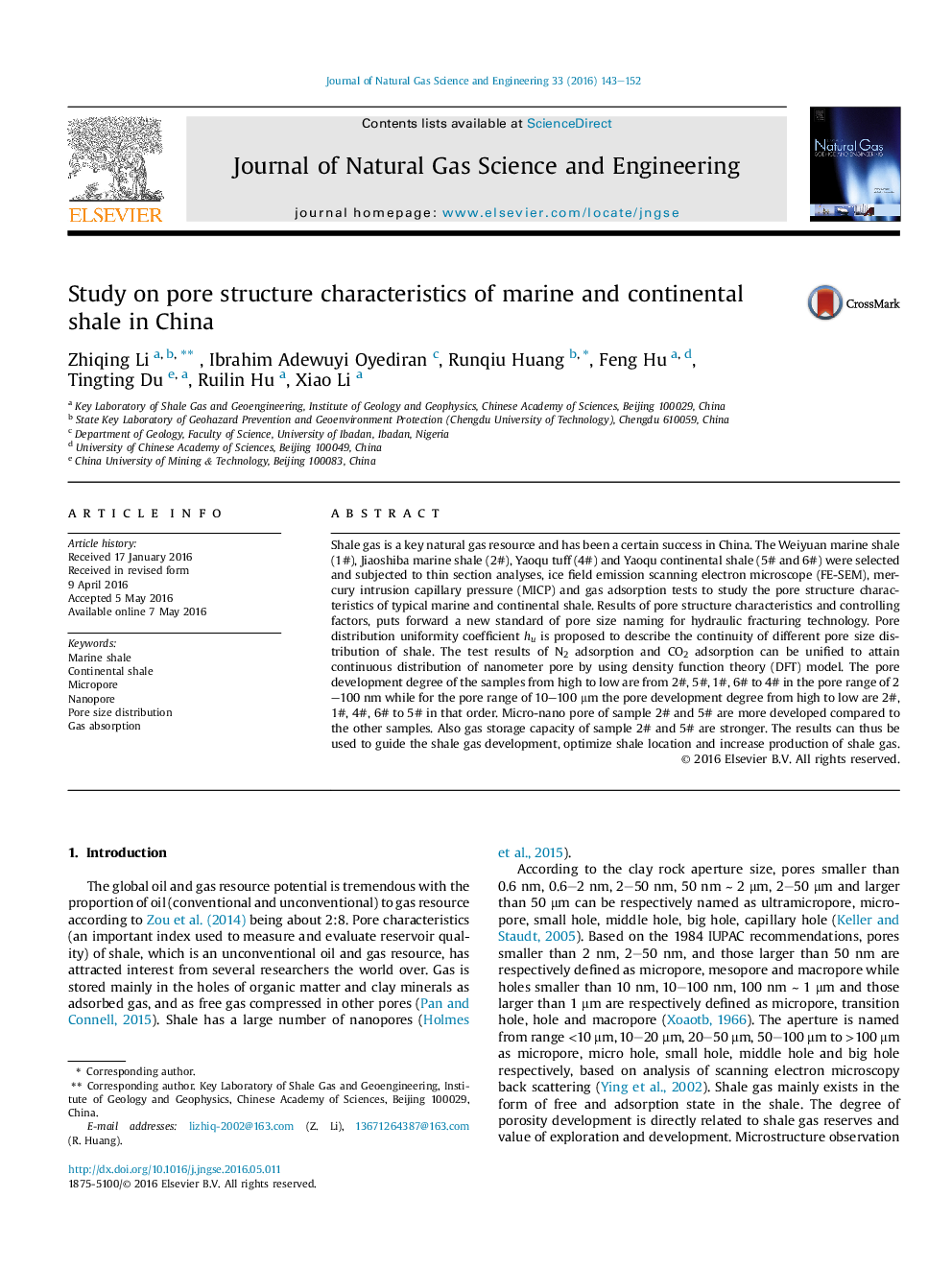| Article ID | Journal | Published Year | Pages | File Type |
|---|---|---|---|---|
| 1757056 | Journal of Natural Gas Science and Engineering | 2016 | 10 Pages |
•Based on pore size distribution uniformity coefficient, samples 1#, 4# and 6# are uniform while samples 2# and 5# are uneven.•A new criterion is put forward to name the pore size for hydraulic fracturing technology.•The continuous distribution of nano-pores can be obtained by unifying N2 and CO2 adsorption results using DFT model.•Jiaoshiba shale from Chongqing and Yaoqu shale from Shanxi can desorb more gas after hydraulic fracturing.
Shale gas is a key natural gas resource and has been a certain success in China. The Weiyuan marine shale (1#), Jiaoshiba marine shale (2#), Yaoqu tuff (4#) and Yaoqu continental shale (5# and 6#) were selected and subjected to thin section analyses, ice field emission scanning electron microscope (FE-SEM), mercury intrusion capillary pressure (MICP) and gas adsorption tests to study the pore structure characteristics of typical marine and continental shale. Results of pore structure characteristics and controlling factors, puts forward a new standard of pore size naming for hydraulic fracturing technology. Pore distribution uniformity coefficient hu is proposed to describe the continuity of different pore size distribution of shale. The test results of N2 adsorption and CO2 adsorption can be unified to attain continuous distribution of nanometer pore by using density function theory (DFT) model. The pore development degree of the samples from high to low are from 2#, 5#, 1#, 6# to 4# in the pore range of 2–100 nm while for the pore range of 10–100 μm the pore development degree from high to low are 2#, 1#, 4#, 6# to 5# in that order. Micro-nano pore of sample 2# and 5# are more developed compared to the other samples. Also gas storage capacity of sample 2# and 5# are stronger. The results can thus be used to guide the shale gas development, optimize shale location and increase production of shale gas.
